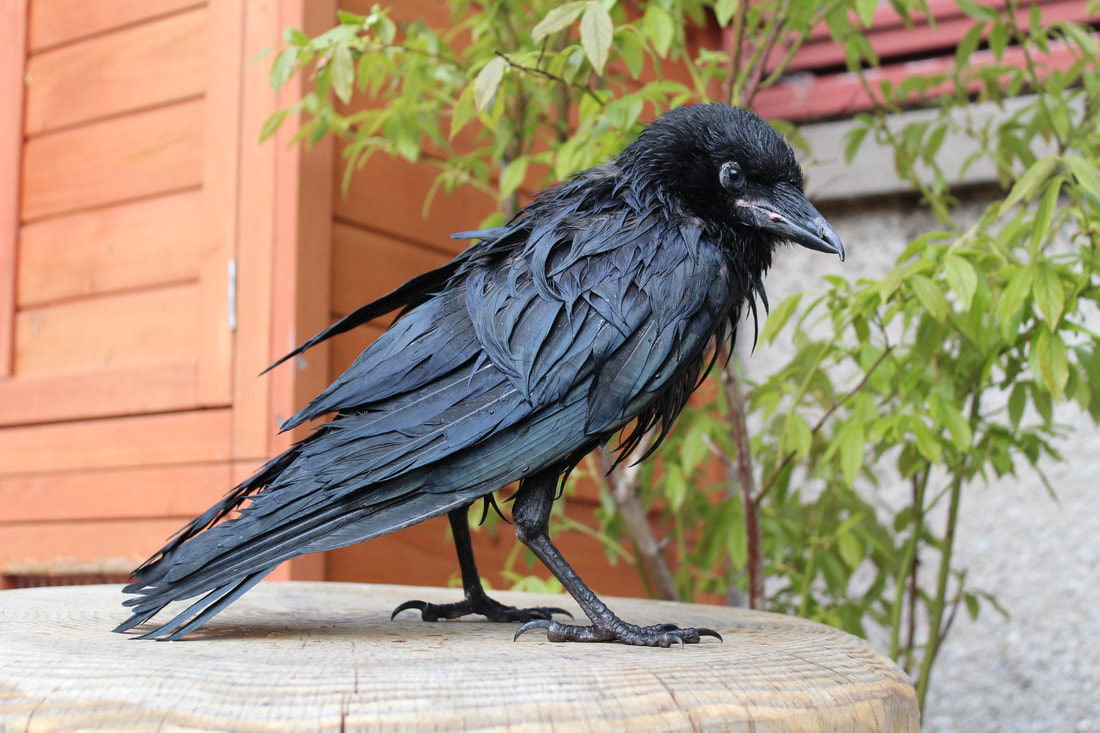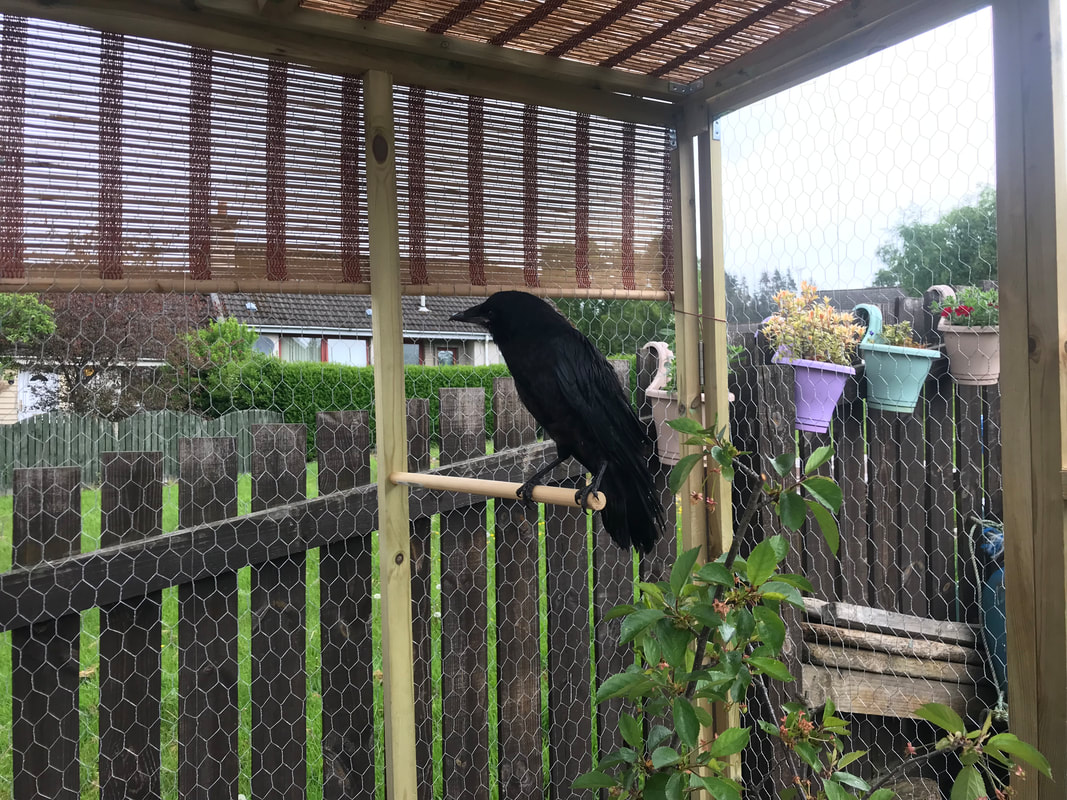|
It seems apt that our first blog post and rehabilitation story should be about two of our most memorable residents to date - Sherlock and Mycroft, the carrion crows. In May 2019 I was contacted by a lady asking if I'd be able to continue the hand-rearing of some young crows that she had found as chicks near her house in rural Moray. She found Sherlock first, small and featherless after having fallen out of a tree. He was actually quite badly injured; both his beak and right eye were damaged. Thankfully, with some TLC and plenty of food, they began to heal. I believe Mycroft was found a little later on, much healthier but still out of the nest too early and unable to fend for himself. His issue was with his foot, as his 'back' talon was deformed and sat towards the front of his foot rather than the back. She had had them for about 4 weeks before asking me to help-out, as she was no longer able to look after them. When I arrived to pick them up there were also two younger crows which she'd only come-across that morning. Sadly they were very weak and quite possibly injured, so didn't survive the drive home. Once we made it back to the rescue it was time to get them settled-in. To our great relief, both were eager to eat so feeding wasn't an issue - especially with Sherlock! For the first few days they spent their time in a cage indoors to get used to the new set-up and to give us time to get an outdoor aviary built. While we had kept birds outdoors here before, they had always been smaller, so we didn't have anything large enough to accommodate these two! At this point they hadn't yet begun to fly any notable distance, so during the day they would hang out in the garden in an open-topped run to get some fresh air. This also helped to teach them to perch, and gave them space to stretch and flap their wings: an important step to build up their strength for fledging. Mycroft struggled a fair bit with perching at first due to the issue with his toe, however he soon got the hang of balancing himself differently to account for this. The lovely weather that we got around that time was such a blessing, allowing them to spend plenty of time outside. They began to explore the garden more, pecking around the plants and investigating the water......not always gracefully! The next chapter began when they were moved into the newly-built aviary. It was kitted out with perches at varying heights, stumps and boxes to explore, foliage to destroy and water to drink (and bathe in). At this point they still hadn't got the hang of feeding themselves so we were out hourly from dawn 'til dusk to serve their meals. Over time we left out dishes of food and spaced-out the feedings more to encourage them to try helping themselves. Once it was clear that they were progressing well and would be releasable when the time came, we got in touch with a good friend who is a licensed bird ringer and arranged for him to come out and put some bling on them. They are both ringed with metal ID numbers, Sherlock on his right leg and Mycroft on his left (due to his deformity). If they are ever trapped elsewhere and these numbers are logged then we can find out through the BTO (British Trust for Ornithology) and learn about their travels. In the event that they are found dead and it is recorded, we can find out and get interesting data on their lifespan. Hopefully this won't be for many years though, even if all those years aren't spent with us. By mid-June Sherlock and Mycroft were no longer enclosed in their aviary and were happily flying around the neighbourhood. This is pretty much their set-up to this day; they're technically free and released, but not exactly gone.... They split their time between our garden, the roof of the church across the road, and in other undisclosed locations from their own adventures. When they're hungry we hear pecks on the window accompanied by a cheeky little face peeking over the 'sill - it's hard to say no! Dynamics between the two have definitely changed over the months. Mycroft is now the boss, so he gets first dibs on food and chases Sherlock off if he tries to challenge this. He is also larger, so possibly a female. We might never know for sure though! They are currently going through their first moult, so have progressed through various stages of scruffiness (looking rather sorry for themselves at times). Their adult feathers are definitely taking over now, so they're beginning to look like 'proper' crows. It's rather exciting! Health-wise, both are doing brilliantly. They have been treated for mites/parasites once as we were a little concerned, but this was more preventative than anything else. Sherlock's eye and beak make him quite distinct. They'll never totally heal, though aren't causing any problems currently. Mycroft's back toe has now almost fused in a forward position, and he isn't affected by this anymore. He has adapted to the lack of balance superbly, a credit to his incredible survival instinct and intelligence. He still walks with a bit of a limp, but thankfully feet aren't needed for flying! I think that's about all the news on this troublesome duo - for now anyway. I will continue to post picture updates on our Facebook page when there are any developments, and finger's crossed this will continue for a long while. Below I'll add some more photos from the past few months of our handsome boys as they grew up. Thank you for reading :)
0 Comments
Leave a Reply. |
Story time...Here we share the stories of some of our rescue and rehabilitation cases to give you a better idea of what we do. Archives
August 2020
Categories |






 RSS Feed
RSS Feed
